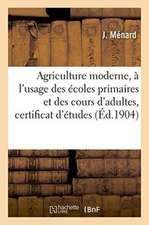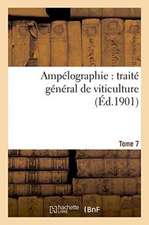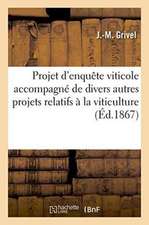Attracting Beneficial Bugs to Your Garden, Revised and Updated Second Edition
Autor Jessica Walliseren Limba Engleză Paperback – 31 ian 2022
- Bug profiles introducing dozens of beneficial insects and the down-and-dirty details on how they catch and eat their prey
- Plant profiles featuring the best plants for supporting beneficials
- Interviews with entomologists who focus their life's work on understanding the value of insects, including Doug Tallamy, Paula Shrewsbury, Leslie Allee, Dan Herms, and others
- An inspiring look at how plants and insects intersect in the most incredible ways
- Why gardening for bugs is just as important to the greater world as it is to your garden
- Tips for creating insectary plantings and borders to support a broad range of beneficials
Preț: 110.88 lei
Preț vechi: 129.51 lei
-14% Nou
21.22€ • 22.21$ • 17.66£
Carte disponibilă
Livrare economică 10-24 martie
Livrare express 21-27 februarie pentru 55.72 lei
Specificații
ISBN-10: 0760371717
Pagini: 208
Ilustrații: color photos
Dimensiuni: 202 x 228 x 16 mm
Greutate: 0.66 kg
Ediția:Second Edition
Editura: Quarto Publishing Group USA, Inc.
Descriere
This revised and updated edition of Jessica Walliser's award-winning Attracting Beneficial Bugs to Your Garden offers a valuable and science-backed plan for bringing balance back to the garden.
With this indispensable gardening reference--now updated with new research, insights, and voices--learn how to create a healthy, balanced, and diverse garden capable of supporting a hard-working crew of beneficial pest-eating insects, and eliminate the need for synthetic chemical pesticides.
After a fascinating introduction to the predator and prey cycle and its importance to both wild ecosystems and home gardens, you'll meet dozens of pest-munching beneficial insects (the predators) that feast on garden pests (their prey). From ladybugs and lacewings to parasitic wasps and syrphid flies, these good guys of the bug world keep the natural system of checks and balances in prime working order. They help limit pest damage and also serve a valuable role in the garden's food web. But, they won't call your garden home if you don't have the resources they need to survive.
With a hearty population of beneficial insects present in your garden, you'll say goodbye to common garden pests like aphids, cabbage worms, bean beetles, leafhoppers, and hornworms, without reaching for a spray can. To encourage these good guys to stick around and do their important work, you'll learn how to create a welcoming habitat and fill your garden with the best plants to support them.
Inside you'll find:
- Bug profiles introducing dozens of beneficial insects and the down-and-dirty details on how they catch and eat their prey
- Plant profiles featuring the best plants for supporting beneficials
- Interviews with entomologists who focus their life's work on understanding the value of insects, including Doug Tallamy, Paula Shrewsbury, Leslie Allee, Dan Herms, and others
- An inspiring look at how plants and insects intersect in the most incredible ways
- Why gardening for bugs is just as important to the greater world as it is to your garden
- Tips for creating insectary plantings and borders to support a broad range of beneficials
The acclaimed first edition of Attracting Beneficial Bugs to Your Garden ushered in a new way to garden; one that appreciates and understands of the power of returning a natural balance to the garden. This revised and updated edition continues to herald and expands on that same important message.
Cuprins
How a Horticulturist Came to Bugs
All About Beneficials
Who They Are, How They Work, and What They Eat
Beneficial Bug Profiles
Meet the Predators and the Parasitoids
Gardening for Bugs
Where Plants and Insects Intersect
Plant Profiles
The Best Plants for Beneficials
Your Beneficial Border
A Guide to Designing for the Bugs
Companion Planting
Battling Pests with Plant Partnerships
Putting It All Together
Who the Beneficials Eat and What to Plant
The Commercial Stuff
Purchased Beneficials, Good Bug Lures, Supplemental Foods, and Seed Blends
Acknowledgments
About the Author
Resources
Index










